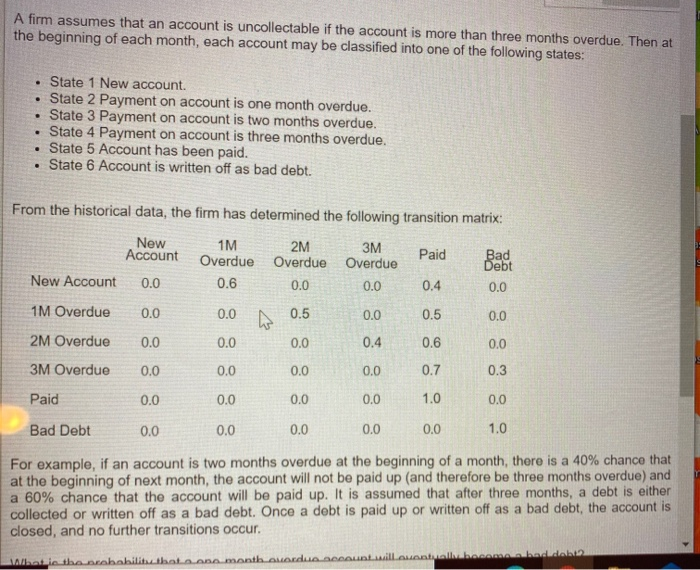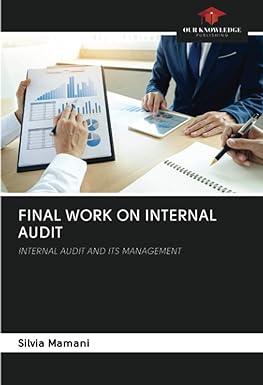Answered step by step
Verified Expert Solution
Question
1 Approved Answer
A firm assumes that an account is uncollectable if the account is more than three months overdue. Then at the beginning of each month, each


Step by Step Solution
There are 3 Steps involved in it
Step: 1

Get Instant Access to Expert-Tailored Solutions
See step-by-step solutions with expert insights and AI powered tools for academic success
Step: 2

Step: 3

Ace Your Homework with AI
Get the answers you need in no time with our AI-driven, step-by-step assistance
Get Started


